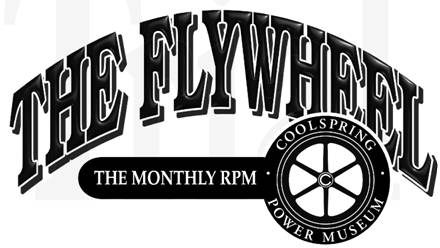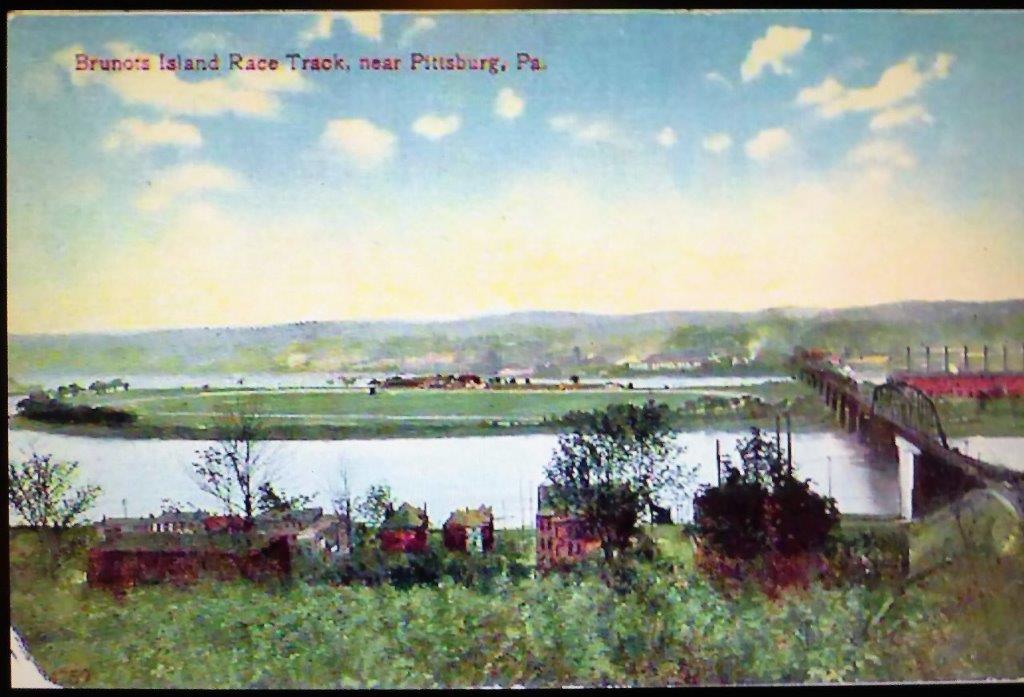
March 2017
Turner Fricke
Part 1: The Men
By Paul Harvey
Pondering over the next museum item to interpret and present, I chose our Turner Fricke engine. Acquired in the early 1970s, it was one of our first large engines to run for our guests. However, I knew very little of its history before the time I brought it here. Delving into the past, I found that it was the legacy of two men who had such different personalities and yet complemented each other. With many different ventures in their earlier careers, they finally produced a very successful machine. The museum engine is shown in Photo 1 as it appeared in 2011.
Realizing that I now had so much information, I decided to make this a two-part article. This month, I will present to the reader the conservative and industrious Harry C. Fricke and the flamboyant and reckless George Edwin Turner. Next month I will detail the "machine."
HARRY C. FRICKE
Harry C. Fricke was born in Pittsburgh, Pennsylvania, on May 14, 1866. His grandfather spelled the surname, "Frickey" and, although the "Y" was dropped, the preferred pronunciation was "Frick-e." I believe that was done to be distinguished from Henry Clay Frick who was a millionarie coke producer for Andrew Carneige and the steel business. Harry wished to make his own career in the electrical business.
Harry's father was Joseph Rowley Fricke, (1833-1902) and he manufactured lightning rods. At the age of 26, in 1892, Harry was living in Pittsburgh, and involved in his father's lightning rod business. In 1899, he was in Pittsburgh and working as an electrician.
The next year, 1900, he and his wife were living in the 13th Ward of Pittsburgh, which is the pleasant residential area along Centre Avenue. He was still noted to be working as an electrician. When his father passed away in 1902, Harry sought out a more ambitious career. Some interesting events soon transpired!
In 1903, Charles Daellenbach, noted for his creation of the Ellwood City gas engine, was granted patents number 745,422 and 745,423, for a two-cylinder, double expanding engine. One view is seen in Photo 2. To me, it seemed that this engine could not be practical. However, these patents were assigned to Harry C. Fricke and George E. Turner, as well as to J.M. and J.J. Flannery. According to my research, the patents are the first mention of the relationship of Turner and Fricke. The engine was never developed.
The Flannery brothers were already wealthy from their bolt works, making bolts for locomotives and the entire steel industry. Soon they learned of a new element, vanadium, that could be found in rich deposits in Peru. Vanadium could be alloyed with steel to make it much harder and more durable. Without this discovery, high speed steel (HSS) cutting tools for lathes would not be possible. Soon the Flannerys controlled the world supply of vanadium, and Pittsburgh began producing the best steels anywhere. They later developed radium production and worked with Marie Curie. Canonsburg, Pennsylvania, became the world's largest producer of this rare element. Of note, the old site of their plant is still fenced off as being radioactive!
The relationship of Turner and Fricke continued as we find Harry as Vice President of the Keystone Engineering Company in 1904. The 1901 ad for the firm, seen in Photo 3, notes that they engineered and installed engines and generators in commercial buildings, using the Walrath gas engine. Keystone was very successful and electrified many structures in Pittsburgh, as well in as the entire country. A typical Walrath gas engine, built by the Marinette Iron Works, is seen in Photo 4. But it seemed that the team was not satisfied selling someone else's engine. They wanted to build their own.
Apparently, Harry was enjoying his new relationship with Turner, as he shared some of Turner's auto racing enthusiasm. He joined the Pittsburgh Auto Club and served as an officer. Turner, on the other hand, had a big Peerless auto and did active racing. Harry's involvement is noted in two newspaper articles of 1904 and 1906. No further mention is found.
At age 44, in 1910,we find Harry living on the north side of Pittsburgh in a prestigious neighborhood. He is now noted to be a manufacturer of gas engines. Perhaps this is the fulfillment of his dream; there is now a Turner Fricke gas engine!
Newspaper articles of 1912 and 1913 reveal that Harry had acquired some real estate overlooking the Schenley Farms district sometime earlier. It now had become a prime area for new and expensive homes. He subdivided it into lots and gained considerable wealth from the new sale. Here, he built a new and expensive mansion consisting of 14 rooms with an excellent view. His new home was on Andover Terrace in Pittsburgh.
In 1913, Harry was noted to be the secretary of the Turner Fricke gas engine company, and, in 1915, he was the manager. He died in 1925 at the age of 58. At that time he was the president of the Turner Fricke Manufacturing Company. During his life, he had risen from manufacturing lightning rods to be a major engine manufacturer.
GEORGE EDWIN TURNER
George Edwin Turner was born in Lockport, New York, on January 11, 1868, and lived a very different life than Harry. He was the flamboyant entrepreneur, while Harry was the conservative diligent worker. Both seemed to achieve their goals, but in different ways.
George's father was Joseph Washington Turner (1833-1918) who was born in Toronto, Canada. He arrived in the United States in 1849, and lived in Lockport, New York. He married Sarah Jane Irish and they had ten children. He is always listed as a sawyer in the woodworking industry.
Somehow, young George was able to attend Cornell University and
graduated in 1893 with a degree in mechanical engineering. He then
married Beatrice Thompson (1874-1921) in Manhattan, New York, in 1897.
With little family money, George and his wife moved to Pittsburgh in
1900, where they had two children. In Pittsburgh, he first
worked as
a telephone company superintendent.
In 1901, George and Harry formed the Keystone Engineering Company to design and install Walrath gas engines to provide electricity wherever needed. Note the description given above. This business proved very successful and was the first combined venture of the two new partners.
However, it seems that George's wealth came from his investments in the new coal fields located in Washington County, Pennsylvania. A 1904 newspaper noted that George, along with the Flannerys, was on the board of the new Meadowlands Coal Company, which had a daily production of 3,000 tons. In 1907, he was also on the board of the Pittsburgh and Washington Coal Company, which was equally successful. In 1908, he had an office in Farmer's Bank Building, downtown Pittsburgh, to manage his mining interests. Now, he could do what he wished.
In 1902, the Iron and Steel Journal disclosed that George, along with Carl Daellenbach, formed the Daellenbach-Turner Manufacturing Company to produce an engine of Daellenbach's design. See Photo 5. This new business would replace the Daellenbach Gas Engine Company of Ellwood City, Pennsylvnania, and would be located there. The engine design was workable, but not developed, and nothing more is heard of this concern.
About 1903, the ever ambitious Turner organized the Diamond Light and Power Company. He provided electric illumination to the Diamond Market area of Pittsburgh, which is now Market Square. A copy of a stock certificate, with his signature, is shown in Photo 6. His plant consisted of ten 85 hp Walrath engines direct coupled to generators. This installation is seen in Photo 7. Diamond was very successful and continued to grow and illuminate downtown Pittsburgh until commercial power was available. Turner is listed as president in 1907. Of course, Keystone Engineering could provide and maintain the equipment in the Diamond power house.
Turner continues to be enthused about auto racing, and a 1904 newspaper article notes that he was chairman of the Pittsburgh Automotive Club and would sanction races on the Brunots Island raceway. The track was located on an island in the Ohio River, and the only access was by ferry boat. See Photo 8. He excitedly told that the renowned Barney Oldfield would be there with a new Flyer, which Oldfield claimed was the faster car on earth. The race was a thrilling event with many local drivers participating. Barney did win, but George came in a close second with his big 60 hp Peerless. What an event!
The Pittsburgh Post Gazette on February 18, 1907, notes that George Edwin Turner and Harry C. Fricke incorporated the Turner Fricke Manufacturing Company to produce gas engines. They finally had the engine they designed and were going to produce it. That story will be the topic of next month's article. Photo 9 depicts a 1910 advertisement for the new concern.
With all his success and fortune, George had one downfall; excessive drinking. Multiple newspaper clippings document George's reckless driving and wrecks with his Peerless. There were many personal injuries, but fortunately no deaths. He spent several nights in jail, but could always buy his way out. "High society" had dealt a death blow on him.
George passed away on February 1, 1923, at age 55, being noted as President of Turner Fricke. Cause of death was advanced liver disease from his years of drinking. Two years later, his partner passed away from a heart attack, and the Turner Fricke Manufacturing Company came to an end. George was buried in Park Lawn Cemetery in Greenville, Pennsylvania. And so, the saga of "The Men" concludes.
Next month's article will be "The Machine." It will detail the years of operation of the Turner Fricke Manufacturing Company and will discuss the three patents. Concluding, it will give photo details of the one remaining Turner Fricke engine, located at Coolspring Power Museum.

Photo 1: The museum's Turner Fricke engine in 2011

Photo 2: Dallenbach engine patent 745,422 of 1903

Photo 3: Keystone Engineering Company ad

Photo 4: Walrath gas engine built by Marinette Iron Works

Photo 5: Dallenbach engine patent 909,558

Photo 6: Diamond Light & Power stock certificate

Photo 7: Diamond Light & Power Company's plant in
Pittsburgh
(Note that Pittsburgh was
spelled without the "h" during this era)

Photo 8: Brunots Island race track

Photo 9: Turner Fricke ad